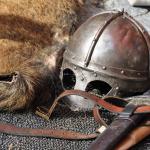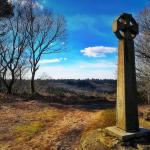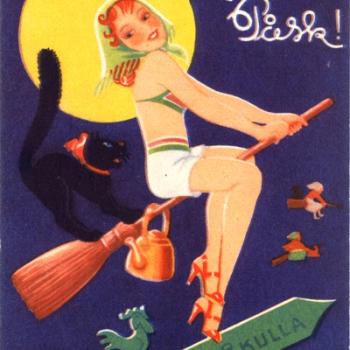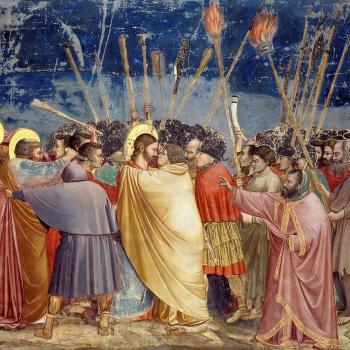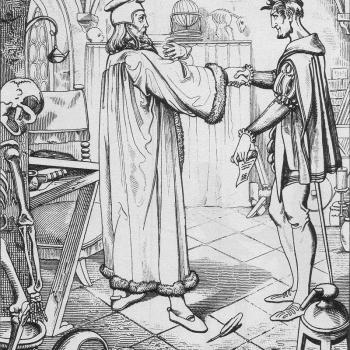
Within every man and woman is a force that directs and controls the entire course of life. (Regardie, 2007)
The Art of True Healing
In 1937, Israel Regardie published The Art of True Healing, a short discourse focussed around the curative and spiritual effects garnered around the use of a single and expanded meditation technique. This simple and important work has been utilised in magical lodges and orders ever since, using the technique in breath and visualisation, applied through Qabalistic principles of the Tree of Life, as a regular practice. The general feel of the book is one of broad spiritual meditation, resembling more a Western yogic technique than a specifically magical practice.
The next year, Regardie followed up on his book with The Middle Pillar, a distinctly more magical work with instructions for the technique accompanied by an examination of the method as well as complimentary practices described, including the Lesser Banishing Ritual of the Pentagram (LBRP). This work, more than the previous, is evidently written for an occult magical reader and introduces in one book the recommended routine of rituals that represent the accumulation of Regardie’s Golden Dawn and associated learnings, presented for the magician with the encouragement of formulating a healthy spiritual hygiene which will serve for further magical work.
Regardie asserts his belief that the student should diligently perform the LBRP (including Qabalistic Cross) for several weeks before introducing the Middle Pillar to their routine. Indeed, Regardie further expresses that the Middle Pillar is, in his opinion, the groundwork of all actual developmental work (Regardie, 1998). With its origins in the Golden Dawn, it is unsurprising that, by the nineteen-sixties, the Middle Pillar exercise was a common yogic practice throughout contemporary occultism and paganism. We should not be surprised, then, to find it referred to in the Robert Cochrane letters (Monmouth, 2012)!
Western Kundalini?
Various references to the Body of Light, or Astral Body, and yoga of the West frequent the writings of occultists until the present millennium. Indeed, Dion Fortune wrote extensively upon the subject, as did her associate Regardie, regarding the Qabalistic approach which underpinned their energy work as equivalent and comparable to the spiritual exercises and philosophy that was arriving from the East in a still yet colonial Britain before WWII. As the British Empire was reaching its crescendo, extended periods of cross pollination with Asia had brought the depth of spiritual pursuits of the Orient to the shores of old Blighty, and which were being embraced by the bourgeois middle class pseudo-intellectuals. Arthur Avalon, real name Sir John Woodroffe (1865 – 1936), from his time spent in India as a Professor of Law and son of the Advocate General of Bengal, published The Serpent Power in 1919. This book, a translation and commentary of Satcakra-nirupana and Paduka-Pancaka, provided the counter to Theosophy’s stance toward the Tantric Shaktism which Blavatsky regarded as “the worst form of black magic or sorcery… most licentious and immoral” (Blavatsky, 1892).
The Serpent Power established and informed Hindu Kundalini philosophy and practice within the minds of those in Britain to the present day, expressing the supremacy of the feminine energy as well as its methods for arousal within the human body through India’s Tantric traditions. What horrified Blavatsky so much were what she perceived to be immoral behaviour and sexual orgies. In fact, these were a deliberate breaking of taboos for the purposes of shattering and remoulding perception through techniques calculated to be shocking, such as those found amongst the aghori, tantric ascetic Shaiva sadhus famed for drinking from kapalas, bowls fashioned from a human skulls. Once again, it should not be unexpected, then, that Cochrane uses appropriate contemporary references to Kundalini in his letters to fellow occultists.
The art of Kundaline [sic] as described by him [Old Man of Westmorland] is strongly associated with riding the staff. (Monmouth, 2012)
A letter which Cochrane claims to be the instructions of a mysterious figure, identified only as ‘Old Man of Westmorland’, includes some fascinating revelations regarding the information that was available, not only to Cochrane but his clan as well. This indicates for us the thinking of the era and the language and references that were used are suggestive of the ideas that were prevalent. Whilst it has been noted that Cochrane eschewed identifying as a Qabalist, he nevertheless demonstrated familiarity with the Sefer Yetzirah and Qabalistic concepts. Whether or not he composed the outline within this letter, he nevertheless comprehended its details and expected his coven members to as well.
Kundalini is identified as a feminine deity, represented as a coiling serpent which resides in the Muladhara, base or root chakra, near the perineum and consisting of subtle energies. Woodroffe went on to write further works that focussed on Advaita and non-dual approaches and philosophies in Hinduism from his experiences and observations. Whilst he represents that late Victorian colonial middle class observer, and therefore a biased witness, nevertheless his works brought the ideas of Kundalini and tantric Yoga to the West, and the use of such terms readily found their way from the Theosophical Society to the doors of the Golden Dawn, and outwards to the burgeoning esoteric movement in Britain and Europe.
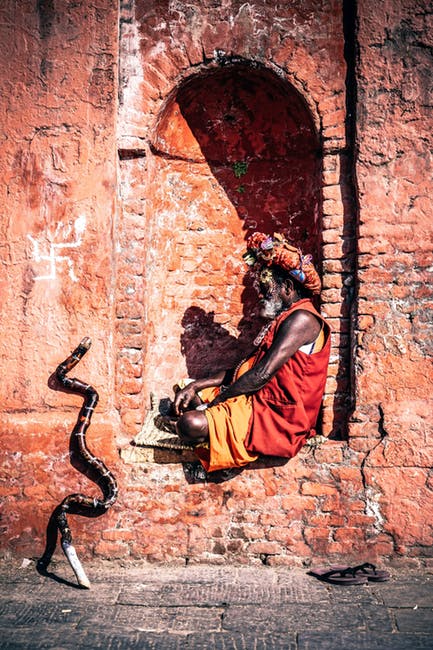
Riding the Serpent
By the time of Robert Cochrane’s activity between the early to mid nineteen-sixties, it would be impossible to say what sources he would have had immediate access to. However, we can say with more certainty that he would have been as aware as any in the world of the occult and witchcraft of terminologies and certain exercises. We can assert that he was familiar with at least the basics of the Middle Pillar exercise by his references to it directly to his correspondents. Indeed, in a letter outlining to his coven the requirements of, and preliminaries incumbent upon them prior to, a ritual to take place on September 25th, identified as a New Moon Ritual, Cochrane instructs that the “exercise of the Middle Pillar must be practiced at these times” (Monmouth, 2012). Additional to this is some exercise or variation he calls the ‘Ascending Snake’, referring it to Yggdrasil and Kundalini. Further, it is evident that Cochrane saw that the symbolism of the stang as being transposable upon the human body.
Within another letter, a selection of books are recommended as being amongst the only ones relevant for study from a witchcraft perspective, which we can read as a veiled imperative that these should be studied. The first one named is “The Qabbalah in full” and we can only speculate which work this references. Others include Crowley’s Magick and Bardon’s “three volumes of Hermetics”. Incidentally, the third volume in a series by Franz Bardon (1909 – 1958) was “given the title of Key to the True Quabbalah”. Whatever the source of Cochrane’s information, he adeptly works it to his own purpose and that of his coven.
Filled With The Highest Power From Above
We can discern, through the study of Cochrane’s writings and those attributed to him or his clan, certain elements of the energy work which his coven were instructed to undertake. There has been a distinct lack of attention to this type of work over the last couple of decades or so and it is quite absent from writings of occultists to this day. This is something that should be remedied as, if you ask any experienced occultist, we cannot underestimate its importance to the works of magic and mysticism. Indeed, it was so prominent in the early to mid-twentieth century that it is now conspicuous by its absence.
Cochrane’s method, aside from frequently referencing the Middle Pillar, can be gleaned from mere snippets of information. Having studied and practiced works relating to Robert Cochrane and his coven over many years, and casting a broad net in order to comprehend better his inferences, I have managed to gather some small appreciation of his approach.
Cochrane’s references provide us sufficient familiarity with the Middle Pillar that we can confidently assert this as a base technique from which to work. Needless to say, this presupposes a level of competency with visualisation, the Middle Pillar exercise, as well as the Qabalistic tree and at least cursory knowledge of the Chakra systems and their application to the West. I recommend Dion Fortune’s book Circuit of Force for those interested in classic Western occult thinking from an adroit source.
In a ritual of consecration, typical of his period, Cochrane recommends the operant ‘imagines’ the body filled with the ‘highest power from above’, drawing the energy to the base chakra. Here, the ‘fires’ are ignited, i.e. Kundalini awoken, and the energy now brought up to the right hand and externalised toward the object to consecrate. In this simple technique, we see the fulfilment of Cochrane’s continual assertion that the principles of magic begin first with the highest at Kether, bringing that power down to Malkuth (Muladhara at the perineum), then drawing it up to the sephiroth, chakra, knot in the Round or energy centre with which you are working. In the development of the consecration ritual Cochrane gives we see how he intended these working principles to be applied to his energy work.
It becomes trickier to interpret the exact language Cochrane uses for the obvious reasons that these are personal letters, using the idioms which were familiar to a particular circle of individuals at a certain time period. That means we must tread carefully and I should make clear here that this is in no way definitive.
Personally, I find much analogy with Cochrane’s energy work and Taoist inner alchemy. There is absolutely no way that I can positively assert that it is the case that he drew from this source deliberately, Taoism being obscure in the west even today. However, he was familiar with some of Crowley’s writings, who was in turn aware of Taoism and made use of the i-ching, which similarly uses the pa-kua, as does Taoist alchemy.

Briefly, the Complete Reality School of Taoism expresses a concept of the Tao as the unknowable force of the universe, analogous with the void and moving within all things, and from which all else emanates in varying stages or degrees, precisely like the Tree of Life. Through these stages, we see polarities of the dyad Yin and Yang emerge, followed by their co-mingling in taji (mostly identified as the Yin Yang symbol in the West rather than its more correct title), and various lesser emanations which provide the elemental nature of the world prior to physical manifestation. The object of Taoist alchemy is a return to the Earlier Heaven, and the Tao, designated by eight trigrams (Pa-Kua) as used in the i-ching. The texts of this school of alchemy are difficult to understand and require the familiarity of the translator with the requisite metaphors and inferences in this highly ambiguous work. One of the preliminary techniques one learns is generally known to the West as the Microcosmic Orbit, or Circulation. This works on the principle of three internal cauldrons or crucibles (as opposed to chakras), the lower, middle and higher, corresponding to below the navel, the solar plexus and the brow respectively. These store and nurture the Three Treasures, being roughly translated as ‘essence’ (jing – lower dantien), ‘vitality’ (chi – middle dantient) and ‘spirit’ (shen – higher dantien). Primarily, the meditator focuses upon the breath in the belly at the lower dantien, where the fires are fanned to boiling point over the cauldron. When this cauldron is boiling and the ‘essence’ (jing) rises it arrives at the middle dantien where it is converted into chi, vital energy. In turn, the objective is to transmute further into the higher dantien until sufficient ‘spirit’ is converted in the upper cauldron to achieve a return to the Tao.
Taoism aside, Cochrane’s energy work uses principles of alchemy and demonstrates that rare understanding of the internal workings of and the language used in alchemy, which obscures and hides its concealed, inner meaning. In this, Cochrane is amongst those acute minds who have discerned the reality of a practice and technique, as well as philosophy, rather than simple repetition. Like Taoist and Tantric practitioners, Cochrane insists that his adherents abstain from sex in order to accumulate the sexual energy which is synonymous with Kundalini awakening, as well as the jing, or ‘essence’ in Taoist alchemy (being the ‘essence’ of life). Unlike instructors in the East, Cochrane does not demand extended periods of abstinence but rather a minimum of three days. Upon the final day prior to ritual, this sexual energy is to be utilised in a circuit and here we come to the crux of Cochrane’s technique, which is reminiscent of the Middle Pillar, but also of the Microcosmic Orbit. Like the Middle Pillar, the Mask of God is a tool of reflection which becomes subsumed within, the spine becoming the middle pillar or shaft of the tree (Yggdrasil) itself.
Technique:
- Begin to feel the energy in the perineum, being aware of a tingling sensation as it begins to warm up.
- Imagine this energy as a brilliant white light that is cool as ice as it moves, with a stroking sensation like a feather (use all your senses).
- Move this energy around the body to the extremities, taking your time to visualise2 fully.
- ‘Charge’ the extremities around the body “according to the Mask of God”, alternatively the sephiroth upon the tree as per the Middle Pillar, or else Chakra system.
- Bring the energy up the spine to the crown of the head and out to and transmute it to a great and brilliant sphere or star above.
- Feel the white light moving back through the crown and head, down the spine and returning to the Muladhara or base.

Bibliography
Blavatsky, H. P. (1892) The Theosophical Glossary. The Theosophical Publishing Society.
Monmouth, J. of (2012) Genuine Witchcraft is Explained. 1st edn. Capall Bann Publishing.
Regardie, I. (1998) The Middle Pillar: The Balance Between Mind and Magic. Edited by C. Cicero and S. T. Cicero. Llewellyn Publications.
Regardie, I. (2007) The Art of True Healing: The Unlimited Power of Prayer and Visualisation. 3rd edn. Edited by M. Allen. New World Library.
Footnotes
1Compare to the Qabalitic Three Mothers AMSh for a comparison, especially Hebrew Shin and Taoist shen.
2This involves all sense. A technique developed by Robert Bruce is the practice stroking a limb and focussing upon the sensation, visualising the physical feeling simultaneously to train the mind to better reproduce it.


